Ah, push it – Use Firebase push in your app
Project setup
We will start with an empty Alloy project.
ti create
# go into the folder
alloy newHave a look at the last section of the first tutorial.
Requirements
- Firebase Core Module for Android / iOS (only needed for iOS)
- Firebase Cloud Messaging Module for Android / iOS
Firebase setup
Go to https://console.firebase.google.com/ and create a project.
create a new project:
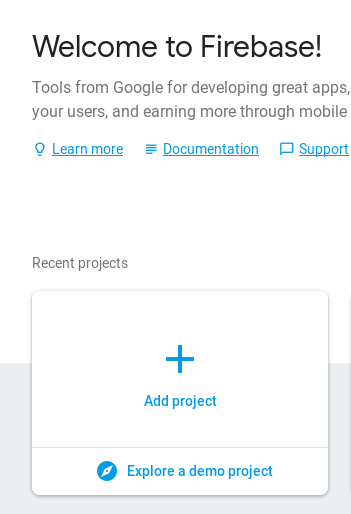
give it a name
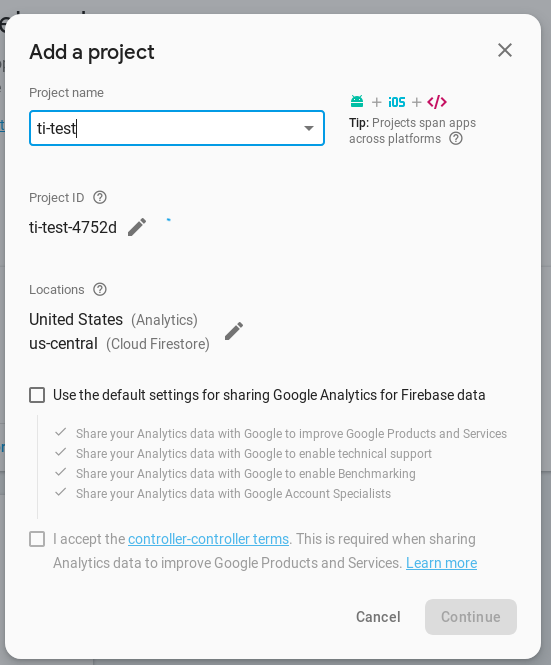
click on iOS / Android
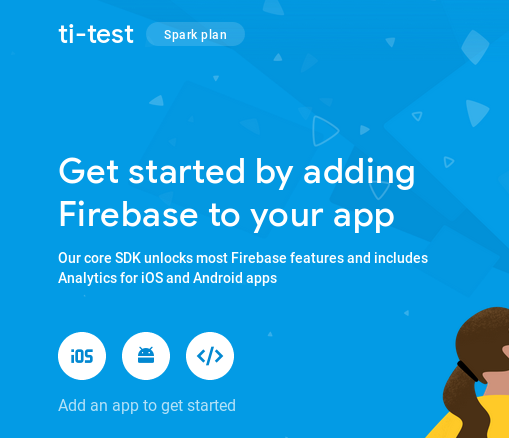
add your package name:
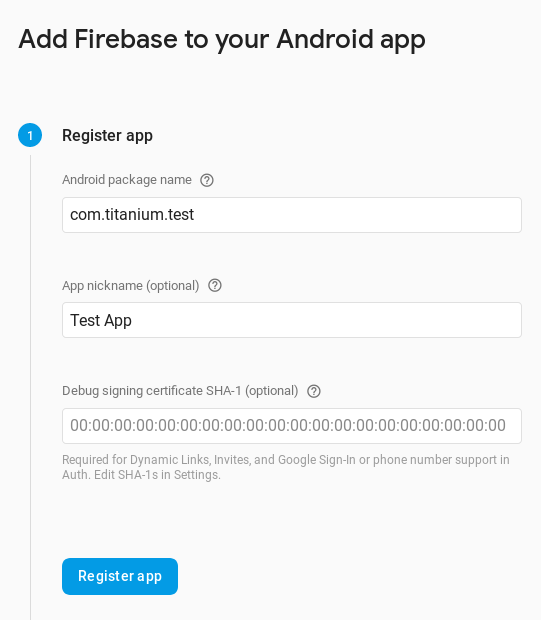
download the config file
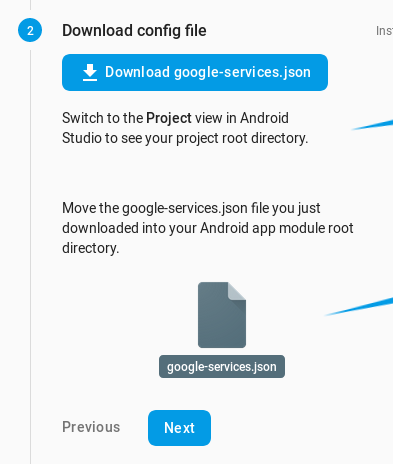
place it here:
iOS: place GoogleService-Info.plist into app/assets/iphone/
Android: place google-services.json into /app/platform/android/
For iOS we need to upload a p8 file.
Go to the project settings - Cloud messaging:

Scroll down to the iOS app configurations and click upload (inside the APNs section)
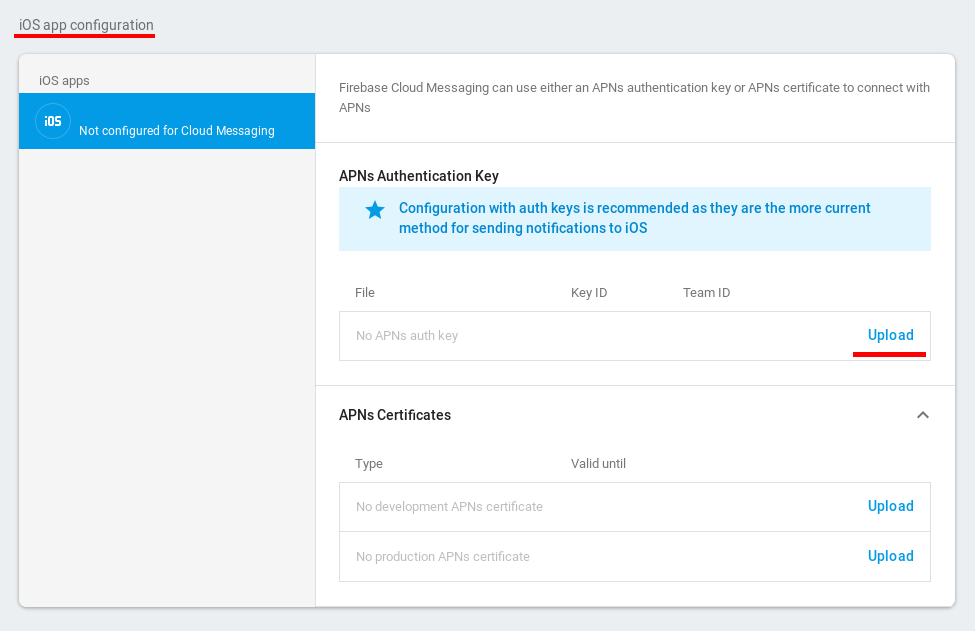
create a APNs file:
go to the Apple provisioning profile center and create a new "Key"
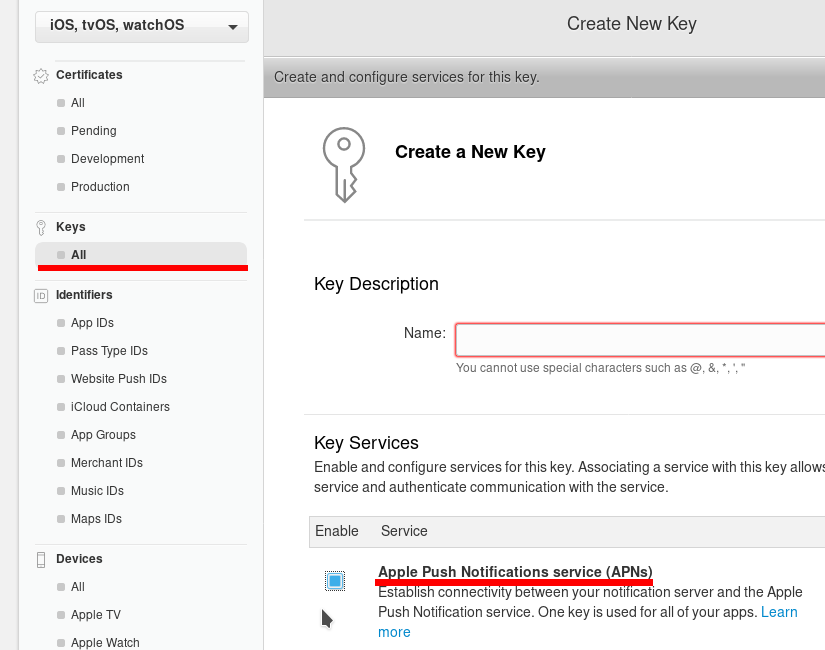
get the key id for later
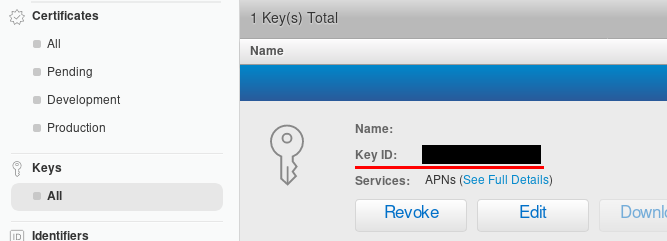
get the team id (link is inside the ? bubble of the upload form below)
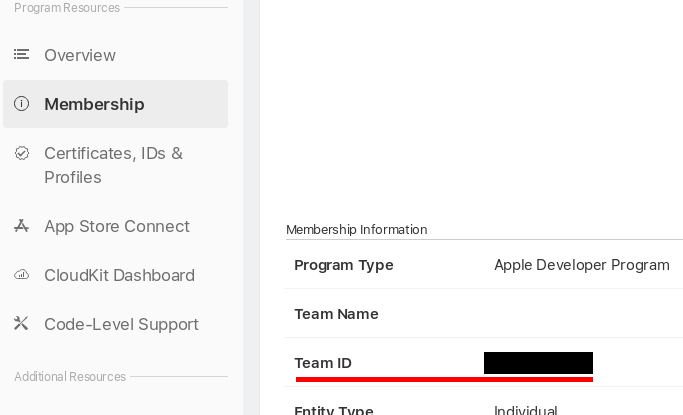
download the file
Add your p8 file and fill in the key and team id
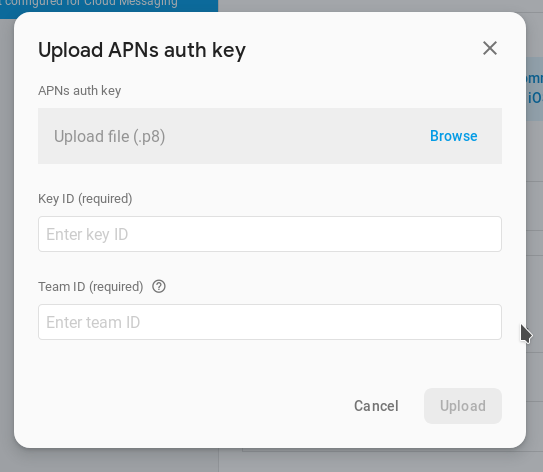
XML setup
Download the modules and update your tiapp.xml:
<modules>
<module platform="android">ti.playservices</module>
<module platform="iphone">firebase.core</module>
<module>firebase.cloudmessaging</module>
</modules>Code setup
For iOS you will need to add the Firebase Core module and load the config file:
// Require the Firebase Core module
if (OS_IOS) {
var FirebaseCore = require('firebase.core');
FirebaseCore.configure(); // default google-services.json/GoogleService-Info.plist will be used
}Android will use gradle to load the google-service.json automatically.
Then we add the Firebase Cloud Messaging module:
var fcm = require('firebase.cloudmessaging');
if (OS_IOS) {
Ti.App.iOS.addEventListener('usernotificationsettings', function eventUserNotificationSettings() {
// Remove the event again to prevent duplicate calls through the Firebase API
Ti.App.iOS.removeEventListener('usernotificationsettings', eventUserNotificationSettings);
// Register for push notifications
Ti.Network.registerForPushNotifications({
success: onToken,
error: function() {},
callback: onMessage
});
});
// Register for the notification settings event
Ti.App.iOS.registerUserNotificationSettings({
types: [
Ti.App.iOS.USER_NOTIFICATION_TYPE_ALERT,
Ti.App.iOS.USER_NOTIFICATION_TYPE_SOUND,
Ti.App.iOS.USER_NOTIFICATION_TYPE_BADGE
]
});
} else {
const channel = Ti.Android.NotificationManager.createNotificationChannel({
id: 'default',
name: 'Default channel',
importance: Ti.Android.IMPORTANCE_DEFAULT,
enableLights: true,
enableVibration: true,
showBadge: true
});
// if you use a custom id you have to set the same to the `channelId` in you php send script!
fcm.notificationChannel = channel;
// Register for Firebase Cloud Messaging
fcm.registerForPushNotifications();
}
fcm.addEventListener("didRefreshRegistrationToken", onToken);
fcm.addEventListener("didReceiveMessage", onMessage);
function onToken(e) {
// if needed: send it to your server
if (OS_ANDROID) {
alert("new Android token" + e.fcmToken);
} else {
alert("new iOS token" + fcm.fcmToken);
}
}
function onMessage(e) {
if (OS_ANDROID) {
console.log("Got message: " + JSON.stringify(e.message));
alert("Got message: " + JSON.stringify(e.message));
} else {
console.log("Got message: " + JSON.stringify(e.data));
alert("Got message: " + JSON.stringify(e.data));
}
}
console.log('FCM-Token: ' + fcm.fcmToken);
if (OS_ANDROID){
console.log('last push data: ' + fcm.lastData);
}Test it
HTTP v1 API using kreait/firebase-php
The server connection requires authentication using OAuth 2. An easy way to implement the new API is with the external PHP API called Firebase Admin PHP SDK (kreait/firebase-php). Follow these steps to install the project:
- go to https://console.firebase.google.com/
- select your project
- go to project settings
- go to "Cloud messaging"
- activate Firebase Cloud Messaging API (v1)
- go to "service accounts" (https://console.firebase.google.com/project/_/settings/serviceaccounts/adminsdk)
- click Generate New Private Key, then confirm by clicking Generate Key
- securely store the JSON file containing the key.
- run
composer require kreait/firebase-phpto install the PHP files
After that you can use this PHP snippet to send push notifications using the HTTP v1 API:
require __DIR__.'/vendor/autoload.php';
use Kreait\Firebase\Factory;
use Kreait\Firebase\Contract\Messaging;
use Kreait\Firebase\Messaging\CloudMessage;
use Kreait\Firebase\Messaging\Notification;
$factory = (new Factory)->withServiceAccount('your_json_file.json');
$messaging = $factory->createMessaging();
$message = CloudMessage::withTarget('token', $token)
->withNotification(Notification::create('Title', 'Body'))
->withData(['key' => 'value']);
$messaging->send($message);Notification types
On Android there are two different messages that the phone can process: Notification messages and Data messages. A notification message is processed by the system, the data message is handled by showNotification() in TiFirebaseMessagingService. A 'data message' has more features like an image or custom fields. To use it add a data field to your payload.
PHP example:
$fields = array (
'to' => "DEVICE_TOKEN",
'data' => array(
"test1" => "value1",
"test2" => "value2",
"title" => "title",
"message" => "message",
"big_text"=>"big text even more text big text even more text big text even more text big text even more text",
"big_text_summary"=>"big_text_summary",
//"icon" => "http://via.placeholder.com/150x150",
//"image" => "http://via.placeholder.com/350x150", // won't show the big_text
"force_show_in_foreground"=> true,
"color" => "#ff6600",
"vibrate" => true,
"channelId" => "default" // or a different channel
)
);Advanced topics
Android: custom sound
You can place a mp3 file in /platform/android/res/raw/ in order to play it when the push arrives. To play that sound you need to set it in the notification channel and inside the data part of the push message:
e.g. for sound.mp3:
fcm.createNotificationChannel({
sound: 'sound'
});$fields = [
'to' => 'DEVICE_TOKEN',
'data' => [
'key1' => 'value1',
'key2' => 'value2'
'sound' => 'sound.mp3'
]
];